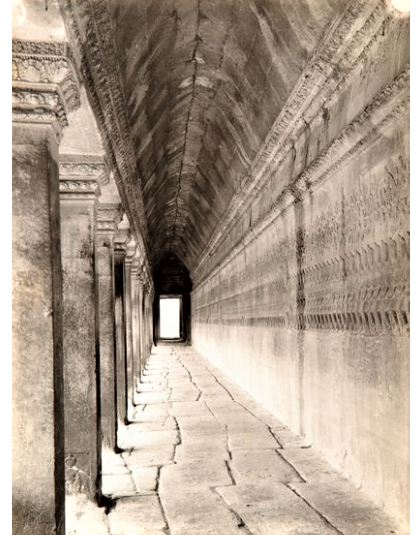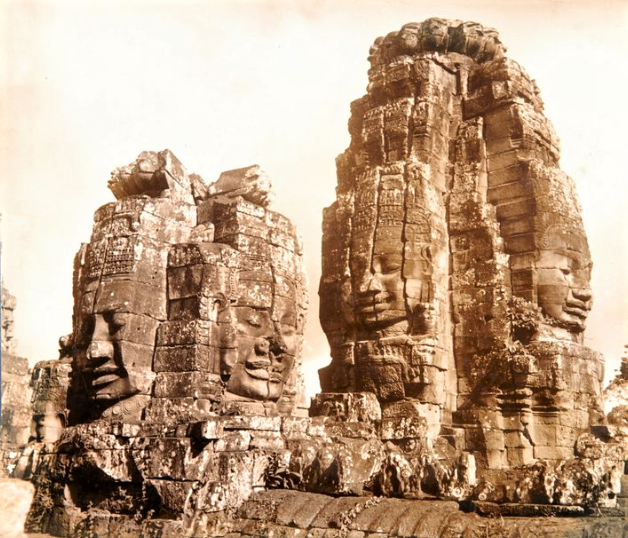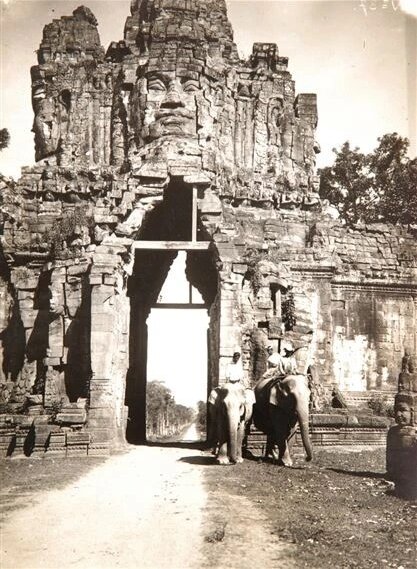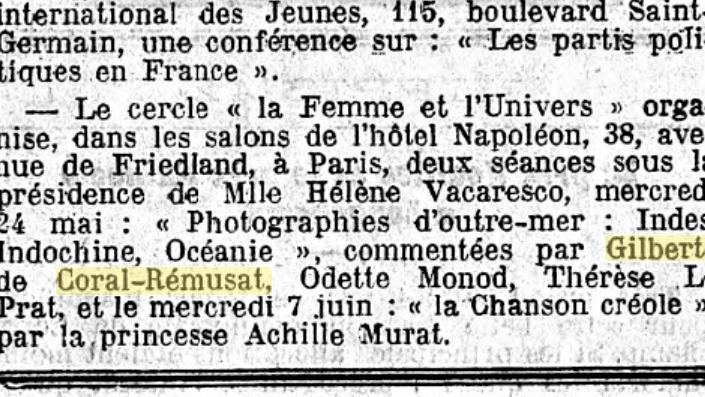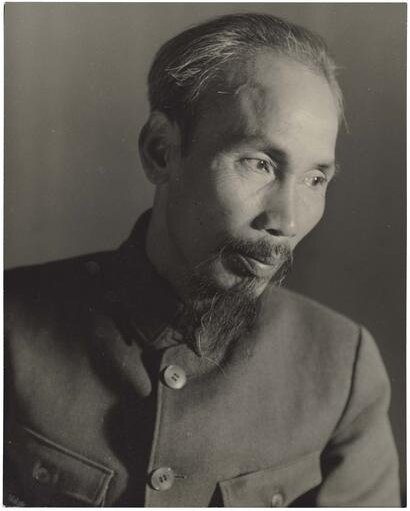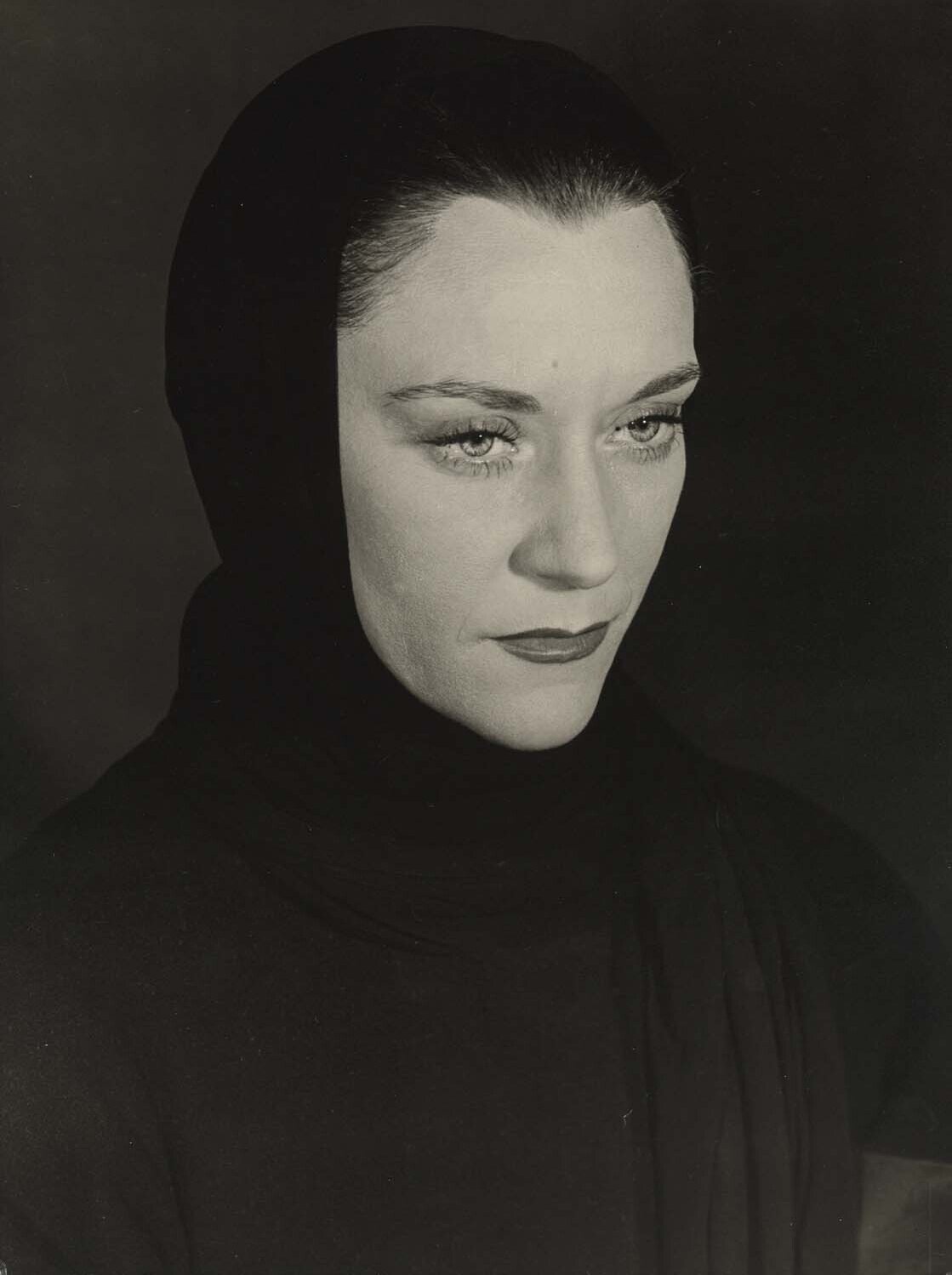Visions of Angkor by...Thérèse Le Prat
by Thérese Le Prat
A small part of Le Prat's photographic work on the ancient Khmer temples,
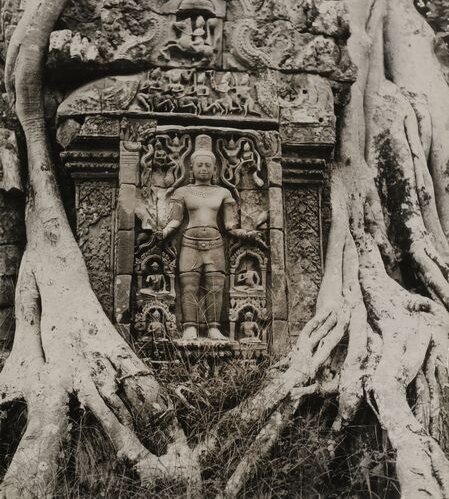
Published: 1937
Author: Thérese Le Prat
A hired travel photographer wandering through the Far East in the 1920s and 1930s, Thérèse Le Prat befriended the members of the Philippe Stern’s archaeological mission in Cambodia in 1936 – 1938.
Apart from the high quality of her numerous shots with analogue cameras (argentique), it is remarkable to observe how her style in Angkor Wat and other temples evolved from a mere leisure travel approach to documenting with great precision the Khmer monuments, and helping the archaelogists to better understand the history behind the stones.
Reviewing Therese Le Prat´s Cambodian photographic work in the light of the archaelogical finds then in process is thus particularly interesting. When she took her most memorable shots, Philippe Stern — with whom she was then getting romantically involved, and whom she finally married in 1944 — was developing his novel theories on the datation of architectural styles across Khmer temples.
We understand why the photographer took particular interest in some monuments and architectural elements while the archaelogist was precisely completing a listing of ¨Bayon style¨ sites. In his essay, he mentions:
- east of Angkor City and beyond its walls, the large Ta Prohm, the middle-sized Banteay Kdei and (at least in part) the smaller temple of Ta Nei;
- north of Angkor City, the great Preah Khan of Angkor and its satallites: Neak Pean, Banteay Prei, Pràsàt Prei, Krol Kô, Tà Som, Banteay Thom;
- in the city proper, the sculpted terraces facing the Royal Palace and possibly some smaller monuments in the Preah Pithu group, etc. ;
- far from Angkor to the west, the very large complexe of Banteay Chhmàr, entirely in the Bayon style ;
- to the south, the provincial temples of Vat Nokor and Tà Prohm at Bati ;
- to the east, about 100 km from Angkor, numerous and important additions in the Bayon style to the more ancient Preah Khan at Kompong Thom…´
Many of the above mentioned monuments were detailed in Thérèse Le Prat’s work.
Photo 1: Bodhisattva in Neak Pean by Therese Le Prat, 1937.
Several of the author’s silver prints have been auctioned on Mutualart.
Tags: architecture, archaeology, Lokeshvara, Bayon, Banteay Chhmar, Ta Prohm, Neak Pean Temple, photography, Preah Khan
About the Photographer
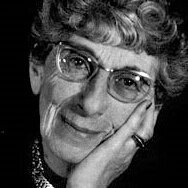
Thérese Le Prat
Thérèse Le Prat [born Cahen] (19 March 1895, Pantin, France — 6 March 1966, Neuilly sur Seine) was a renowned photographer who worked on Cambodia, Tonkin and Annam (Vietnam) during several decades.
When she divorced French publisher Guillaume Le Prat in the early 1930s, he offered her a Rolleiflex camera and, thanks to her dawning talent and then fact she was employed by the Compagnie des Messageries maritimes as a commercial photographer on their route to Madagascar, Asia and Oceania. In Hanoi and Cambodia, she met and befriended Gilberte de Coral-Rémusat, for whom she illustrated several publications.
On 24 May, 1939, Le Prat joined Gilberte de Coral-Rémusat and Odette Monod in Paris for the conference Photographs from India, Indochina and Oceania [source: Le Temps/BNF].
Thérèse Le Prat had another strong connection with Cambodia: her brother Gilbert Cahen, a French Navy engineer married to then-budding photographer Denise Colomb, was based in Saigon (Ho-Chi-Minhville). Visiting Angkor several times, she got close through Coral-Rémusat to Khmer art historian Philippe Stern, whom she finally married after World War II, the couple publishing later two book together, Le Petit python explorateur (Paris, Arts et métiers graphiques, 1953) and En votre gravité, Visages (Paris, Vilo, 1966).
After 1947, she specialized in elaborate portraits of French major artists, dancers, writers, actors and actresses, and becoming a sought-after theater stage photographer. She always stayed far from the idyllic, propagandist vision of a colonial “Orientalism”, as reflected in her 1940 first solo exhibitions, Tropiques Tristes [literally Sad Tropics], a title that probably inspired anthropologist Claude Lévi-Strauss to call one of of his major essay Tristes Tropiques (Paris, Plon, 1955) — the title was left in French for John Russell’s 1961 English translation, after an attempt to the title A World in the Wane.
In 1992, her archives containing some 18 000 negatives, 5 000 original prints, 15 000 contacts, and personal notes, was donated to Musée du Jeu de Paume, Paris. In 2015, a collection of 140 silver prints capturing mostly Khmer temples (Bayon, Phum Prasat, Angkor Thom…) and daily life in Tonkin and Annam, was auctioned and sold at Galerie Drouot, Paris.
1) Portrait of Vietnamese leader Ho-Chi-Minh in 1945, by Thérese Le Prat [source: Vietnam Online]. 2) Actress Maria Casarès as “The Destiny” in Jean Cocteau’s movie Orpheus, 1951, by Thérese Le Prat [source: MPP-POP].
Major Exhibitions
- 1940 — Tropiques tristes, Paris, Grand Palais.
- 1950 — Visages d’acteurs, Paris, galerie Chez Loize.
- 1952 — Autres visages d’acteurs, Paris, librairie Bonaparte.
- 1953 — Le Petit python explorateur, Paris, librairie Bonaparte.
- 1953 — Salon national de la photographie, Paris, Bibliothèque nationale (group exhibition).
- 1955 — Masques et destins, Paris, librairie Bonaparte.
- 1956 — Gens d’images, Paris, galerie d’Orsay (group exhibition).
- 1957 — 2e biennale de la photographie, Nice (group exhibition).
- 1959 — Le Masque et l’humain, Paris, musée des Arts décoratifs.
- 1961 — Salon national de la photographie, Paris, Bibliothèque nationale (group exhibition).
- 1962 — Un seul visage en ses métamorphoses, Paris, musée des Arts décoratifs.
- 1976 — Thérèse Le Prat, Photographies, Tunis, Ambassade de France en Tunisie.
- 1981 — Hommage à Thérèse Le Prat, Bièvres, musée français de la Photographie.
- 1994 — Spectacles, Paris, hôtel de Sully (group exhibition).
- 1995 — Thérèse Le Prat, Paris, hôtel de Sully.
- 2022 – 2023: Artistes-Voyageuses, l’appel des lointains 1880 – 1944, Évian, Palais Lumière (group exhibition).

